Car Fridges
Troubleshoot and Repair a Car Fridge for Camping Season
You’re on the road when your car fridge fails to operate. It may be a nightmare, particularly for first-time RV car fridge owners. Regardless of the particular reason, the outcome is the same. Without refrigeration, you risk losing perishables. Nobody wants a fridge brimming with warm food and beverages. Fortunately, diagnosing and fixing your car fridge is not quite as complicated as you may believe.
Before you hurry to hire a professional, you may attempt some easy Car fridge repairs on your own. I’ll discuss a variety of typical issues with the car fridge and strategies for resolving them. Some of the most typical problems occur in new RVs as well, so do not despair. I’ll make sure you understand when it’s safest to delegate to an expert. Additionally, you’ll discover how to determine when it’s time to replace your Car fridge.
How Does My Camper Refrigerator Work?
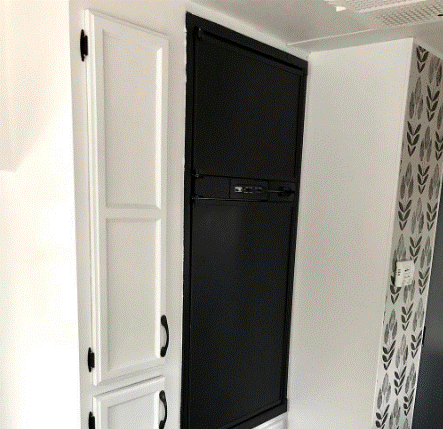
A car fridge, like a fridge at home, cools your food to a safe storage temperature. Often, it is compact to fit within the RV and has a few unique characteristics, such as latching doors and the capacity to function on several power sources. As with your home refrigerator, the car refrigerator functions as a heat pump by transferring heat from the interior to the exterior. However, when talking of a car, “outside” might mean “outside the RV car,” due to the vented nature. Additionally, they keep food cold or frozen, whether stationary or traveling down the road. The two main types of fridges are:
1. Compressor Fridge
In this type, the car fridge operates by employing a tiny compressor unit to chill. These fridges may utilize 12 or 110 Volt power. It is the same sort of fridge widely used in households and will be most recognizable to consumers. While DC alternatives that can operate off the RV cars batteries are less prevalent, they are growing more popular. These devices are very efficient and require very little electricity. The drawback is they are generally more expensive to acquire upfront.
Compared to absorption refrigerators, compressor refrigerators are more valuable, since these fridges can generally attain lower temperatures, even when it is hot outdoors. It’s a typical complaint that car fridges don’t keep ice cream frozen in the freezer, but this type of car fridge is your best choice for extreme cold.
2. The Compressor Cooling Process
A cooling technology known as closed-loop cooling based on mechanical gas compression via compressor is used in the compressor refrigerators. Due to this, the term mechanical refrigeration is used for it. The cycle is divided into three major components.
- Compression: The compressor pressurizes the refrigerant vapor to a more significant pressure during this step. This increased pressure causes the refrigerant vapor to heat up.
- Condensation: The heated refrigerant is cooled in the condenser. Like water vapor condensing on a cold surface, the vapor condenses into a liquid throughout the cooling process.
- Evaporation: High-pressure refrigerant is then pushed into a more extensive tube via an expansion valve or tiny hole. This process brings the liquid’s pressure down to its boiling point. The refrigerant’s boiling point is shallow (-15 to -20 degrees Fahrenheit), removing the refrigerator compartment’s heat. The vapor then returns to the compressor, where the cycle is restarted.
2. Absorption RV Fridge
This type of fridge has been the most utilized fridge design in RVs throughout the years due to its ability to run on electricity or propane. You may occasionally hear them referred to as “2 way” RV refrigerators or even “3 way” RV refrigerators. It is easy to identify this sort of car fridge since it will have vents on the RV’s exterior at the location of the fridge. When the fridge is running on propane, the vents are required to exhaust the exhaust and heat.
While it may seem contradictory, this sort of fridge uses propane to maintain calm via a complex chemical process occurring in a series of tubes at the rear—the heat generated by the propane fuels the chemical reaction.
The Absorption Chemical Process
A refrigerator in an absorption RV works by combining heat and chemical interactions between the three substances: ammonia, water, and hydrogen gas. In rare cases, we may see helium be used. Although the process is sophisticated, the fridge, like the compressor, is confined within an enclosed system. The cycle is divided into three distinct stages.
- Regeneration: In this stage, the ammonia (refrigerant) is combined with water and heated until it boils. It is because water and ammonia have different partial pressures; they separate. Water condenses farther down the system, while ammonia continues to rise to the top of the fridge. At the top of the fridge, ammonia starts to react with hydrogen. It results in the release of heat as ammonia condenses.
- Evaporation: The second step is evaporation. The liquid ammonia vaporizes at low partial pressure by absorbing the heat present in its surroundings during evaporation. This process occurs at the fridge’s backside fins and absorbs the fridge’s heat.
- Absorption: The ammonia gets mixed with water and gets dropped into the water ammonia solution after the ammonia vaporizes to the gas form. The solution is then prepared for re-boiling in the chamber for regeneration, where the procedure is repeated.
Things to know before you start Repairing and Troubleshooting
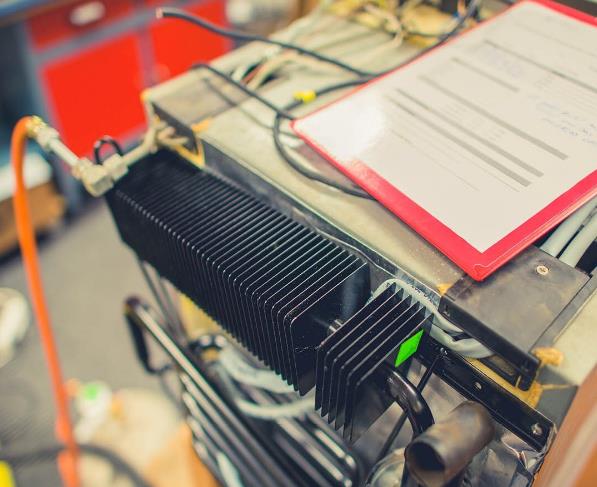
Before beginning any repair work of a car fridge, there are a few items you should verify. You should begin with the most accessible adjustments and work your way up to the more difficult ones. Additionally, you want to determine the severity of the situation.
Staying Level
While it may seem pointless, ensure that your RV is level. It may be misaligned, which is why your refrigerator isn’t operating. Consider your fridge. Your kitchen is a level, sturdy space. Unless the floor of your kitchen is bent, there is little chance of your fridge being stuck at an angle.
It is your responsibility to ensure that everything is level in an RV. If your car is even slightly angled, your fridge will be as well. Under these conditions, your car fridge may not operate properly. I recommend investing in a level to test this correctly. It raises the likelihood of ammonia accumulating in areas it should not.
Pinpoint the Pro24blem
Utilize all possible functioning modes on your refrigerator. It also provides DC power for those of you with 3-way refrigerators. If your fridge operates on one sort of power but not another, your cooling unit is operational. It is good news, as a fried unit may indicate that a new fridge is required.
Troubleshooting Electrical Issues in a Car Fridge
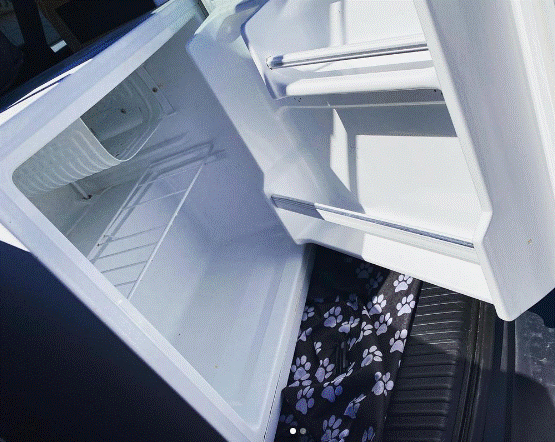
If your fridge operates normally on propane but not on electricity, you have an electrical problem. If you are unsure about managing the electrical system in your camper, contact an expert.
- Step 1: Locate your refrigerator’s owner’s manual. If you don’t already have one, you may obtain one through the company’s website. This step will be highly beneficial to you throughout the repair.
- Step 2: Begin by determining the 120-volt alternating current (AC) voltage. Examine the circuit breakers and fuses in the refrigerator’s rear. It might just be a matter of tripping a switch. Avoid touching any wires that are damaged. Unless you are an electrician, I recommend that you contact a professional.
- Step 3: If the circuit breakers and fuses are in good condition, examine the outlet on your refrigerator. Check to determine whether another electrical gadget works by connecting it in. Additionally, you may purchase a multimeter to provide precise readings of voltage, resistance, and current.
- Step 4: If you have a 3-way fridge, you should also test the 12V DC. You may use a 12-volt circuit tester to do this test.
- Step 5: If everything is operating correctly, the heating element may be the source of the problem. This fridge is powered by either 12-volt DC or 120-volt AC, depending on the model.
Troubleshooting Propane Issues in a Car Fridge
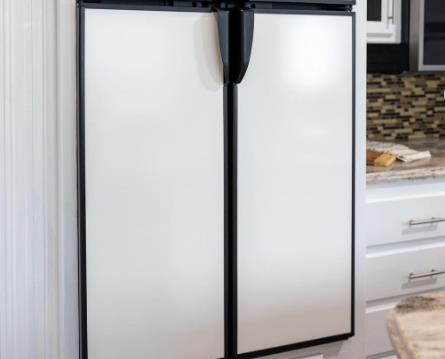
If your refrigerator operates when powered by electricity but not by propane, it’s time to check all propane-powered systems.
- Step 1: Begin by inspecting the bare basics. Ascertain that you are not running out of petrol. Check the valves to ensure they have not been unintentionally shut off. Keep an eye out for your LP alarms. This type of cooling will not function in some campers if these gadgets are not connected.
- Step 2: Inspect the refrigerator’s thermocouple for proper operation. This gadget is in charge of sensing and regulating the flow of gas through your gas valve. Replace the thermocouple if you notice that the burner ignites but does not stay lit.
- Step 3: If your burner is entirely inoperable, clean it out. Debris might be obstructing it and preventing it from catching. Remove the metal covering and bring out your vacuum. While a shop vacuum is preferred, you may also use an ordinary one. As long as the attachment is not too bulky, it should suffice. To take it a step further, obtain a fine wire and clean the burner orifice. Your flame should now be glowing steadily again.
How to Fix a Camper Refrigerator with Ammonia Sediment
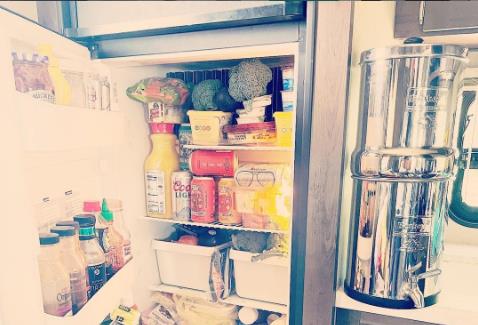
Sedimentation of ammonia can be an issue, particularly in older refrigerators or RVs that have been in storage for an extended period. When a fridge is left unattended for an extended period, the ammonia becomes liquid and may ultimately leak or pool down the cooling unit.
Unfortunately, once this occurs, there is nothing that we can do for the fridge. If you haven’t used your fridge in a while and discover it isn’t cooling or is too warm, sediment may be clogging the mechanism. At this point, resolving the issue will only serve to prolong it.
Flip your Fridge
- Perhaps you’ve heard that inverting your refrigerator will eliminate ammonia sediment.
- Although there is no assurance that this will work, it certainly does not harm to try.
- Remove your refrigerator and invert it.
- Allow a few hours for the ammonia sediment to drain from the device.
How to Fix a Camper Refrigerator with a Leaking Cooling Unit
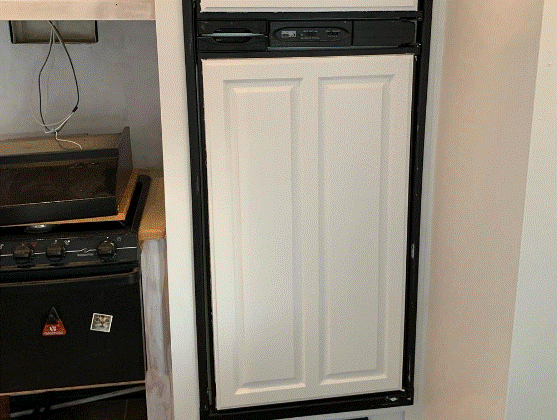
You will smell ammonia and notice immediately if your car fridge cooling unit is leaking.
- Step 1: Turn off the power to your refrigerator. Due to which your leaky refrigerator will be unable to maintain a cold temperature in any case.
- Step 2: Gain access to the cooling unit of your refrigerator. If everything appears to be in order, you may be able to save the unit. If you notice yellow everywhere, your cooling unit may have reached the end of its useful life. The yellow residue is caused by ammonia corroding the steel tube.
- Step 3: Stop the leak and prevent the spread of ammonia. Until you repair your cooling unit, your fridge will be inoperable.
How to Fix a Camper Refrigerator with a Frozen Cooling Unit
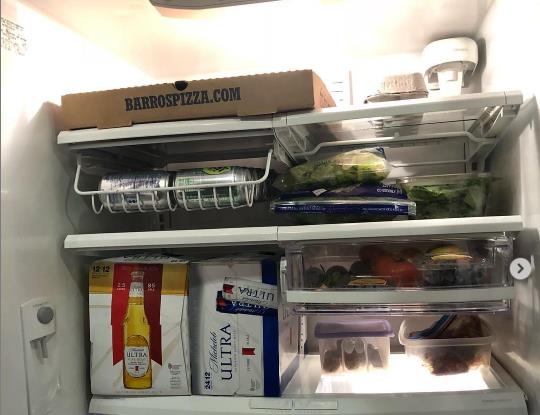
It is unlikely unless you live in a region of the planet with a subzero winter — we’re talking temperatures below -30 degrees Fahrenheit. As long as the electricity is on and the temperature inside is above freezing, you should be OK.
However, if you keep your RV in temps below zero, the cooling unit may freeze. Ironically, once the unit freezes solid, it will become incapable of cooling anything else, as the frozen bulk will obstruct the system. However, the solution is straightforward. Re-heat the device using a high-watt bulb or a space heater.
How to Fix a Camper Refrigerator that’s Leaking Water
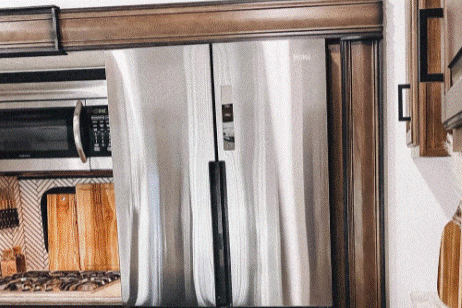
Leaking water from your car fridge is inconvenient, but it may also be dangerous. Not only must you keep it clean regularly, but someone may slip and fall.
- Step 1: Adjust the temperature settings on your refrigerator. Moisture might collect if the temperature is too high. Utilize the “dry” option on your refrigerator if it exists. It can assist in avoiding excessive humidity.
- Step 2: You may need to defrost your refrigerator. If a large chunk of ice is obstructing the fridge, this might be the source of the leak.
- Step 3: If you continue to discover water, check the drainage hose on your refrigerator. It is accessible via the back of the fridge. Water will gather inside your trailer if the drainage pipe is broken or clogged.
How to Fix a Camper Refrigerator with Burner Fail

At higher elevations, a fridge burner may fail. Oxygen and fuel are required for combustion. At elevations more than 5,500 feet, oxygen levels decrease, and your fridge will either struggle to keep cool or may burn out entirely. The most straightforward answer is to constantly remember to switch to AC power as you gain altitude. If you’re stuck with a failing burner, consider lowering your altitude or connecting to electricity.
How to Fix a Camper Refrigerator that’s Not Starting
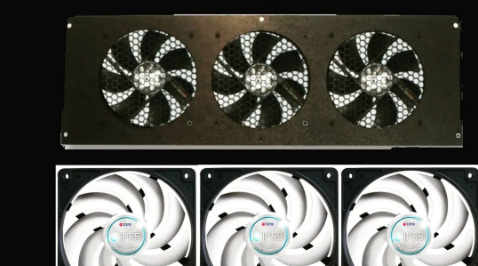
This solution may sound absurd, but the issue might be connected to the location and manner in which you parked. If you use your refrigerator while parked on a decline or incline, ammonia may collect in the evaporator and not circulate through the system. Ammonia buildup will cause the refrigerator’s cooling qualities to deteriorate or cease entirely. To correct this, ensure that you park on a level, even surface.
Maintaining your Camper Refrigerator

As with other RV equipment, routine refrigerator maintenance is critical. Developing a few positive behaviors will go a long way toward avoiding breakdowns.
1.Select the Appropriate Source of Energy
There are instances when electricity is preferable to propane. For instance, if you’re camping at a high elevation. If you’re up high, it’s typically preferable to utilize electricity rather than propane. Due to the lack of oxygen, liquid gas does not burn as readily as at lower heights. It’s not just an issue of squandering propane. Your refrigerator’s burners may go out, necessitating a costly repair.
2. Clean it Regularly
When cleaning out the refrigerator, don’t forget to clean the exterior. Accumulations of dirt on the burners or in the drainage line might create problems. Always thoroughly clean your refrigerator before storing your RV. Consider it a required piece of maintenance.
Tips for Your RV Refrigerator
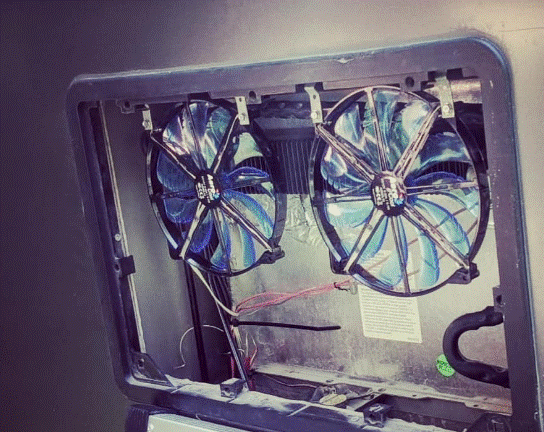
A refrigerator for an RV requires a bit more consideration and preparation than a refrigerator for your home. Specific methods might assist you in extending the life of your fridge. Consider the following:
- Please turn it on several hours before you want to use your refrigerator.
- Refrigerate an ice block to expedite the cooling process.
- Maintain an even temperature in the refrigerator.
- Consider getting an RV refrigerator fan that is powered by batteries.
- Ascertain that the refrigerator vents are clean and free of debris.
- Place your RV in such a way that the exterior vent is shaded.
- Allow for ventilation between items – avoid packing them too tightly.
- Regularly defrost.
Dos and Don’ts of Car Fridges

It’s a good idea to familiarize yourself with the dos and don’ts of car fridges. Keep all of these easy guidelines and instructions in mind to improve the efficiency of your car fridge and maintain the best temperatures possible.
- If your RV is not level, avoid using the propane setting on your fridge.
- Conduct regular inspections of the evaporator fins or coils.
- If possible, avoid storing hot meals in the fridge.
- Verify that your freezer does not have any ice buildup on the sensors.
- Maintain as much cold food from the grocery shop as possible during transportation.
- Do not turn off your fridge when food is still inside.
- Allow as least 12 hours for your fridge to “warm up” before keeping food inside your RV fridge.
- Avoid opening your fridge doors more than necessary.
- Make an effort to keep the side of your RV with the fridge shaded.
- Adjust the fridge’s temperature according to the outside temperature.
- Avoid overstocking your fridge, especially if it is an absorption fridge, as this type of fridge relies on air circulation to keep food cool.
- Determine which areas of your freezer are the coolest. There, you may store your ice cream and other melt-able goodies.
- Consider investing in a second portable freezer if you frequently travel during the summer.
- Do not overlook the gasket that surrounds your fridge and freezer doors. Maintain it clean and inspect it for tears, and replace it as required to assist in maintaining the cold air in your fridge.
Conclusion
In this article, we have discussed all the things that you should know about a car fridge. You will find this article beneficial as it will provide you with all the details about maintaining your car fridge and what you should do if you face various challenges. If you’re wondering how your car fridge operates, you’ll find tons of information in this article. We have answered almost all the queries about car fridges and think that this article will benefit you.

